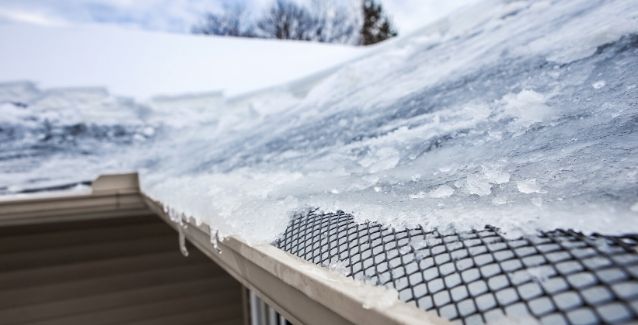

Winter weather may be currently out of sight and out of mind, but it’s always best to plan ahead. In fact, summer is the perfect time to start preparing your home for the upcoming winter. Taking a bit of time this summer to conduct home renovations will ensure your house is in proper working order when the first snowstorm of the season hits.
Ice dams are some of the most common issues for homes during the winter, and they can wreak havoc on one’s roof. Ice dams occur when snow repeatedly melts and freezes, forming a thick layer of ice along the eaves of the roof. This buildup of ice makes it difficult for other snow and water to slide off the roof, thereby increasing the likelihood of sagging and water damage on the roof. Understanding how to prevent ice dams on your roof will keep your home safe when the winter weather finally hits.
Work from the outside in
If there’s no snow on your roof, there’s virtually no possibility that ice dams can form. As such, it’s important that you clear any snow off your roof as soon as possible. Metal roofing is very beneficial in this respect. Snow, rain, sleet, and even ice slide off metal roofs far easier than they do on wood, tile, or asphalt shingle roofs. As the snow begins to melt, it will quickly slide off the roof, leaving little to no time for it to freeze and form an ice dam.
It’s important to note that, depending on the pitch and shape of your roof, you may need to do a bit of extra work to ensure the snow is fully cleared away. Roofs with multiple valleys or an extremely low pitch will collect snow more easily, so they may be more likely to form ice dams. To learn more about how to prevent ice dams on your roof through metal roofing in Uniontown, PA, and the surrounding areas, contact our team at Distinctive Metal Roofing.
Improve attic ventilation
One of the best ways to prevent against ice dams is to improve the ventilation in your attic. Improving ventilation circulates cold air through the attic and balances the temperatures inside and outside the space. When the outside and inside temperatures match, there’s far less of a chance that the bottom layer of snow will melt and then refreeze to form an ice dam.
You can use several methods to improve ventilation in your attic. Installing ridge and soffit vents, for instance, will provide a more permanent fix for attic insulation, as will flashing around the chimney. Caulking any additional cracks in the roof will also improve ventilation.
Install additional insulation
Ice dams are more likely to occur in instances where the outside temperature is far colder than the internal temperature in the attic. Installing additional insulation reduces the temperature in the attic, effectively decreasingly the likelihood that an ice dam will form. Insulation should be installed in the walls and the floor of the attic space. Hot air rises, and placing insulation on the floor of the attic will restrict the amount of hot air that rises into the space.

